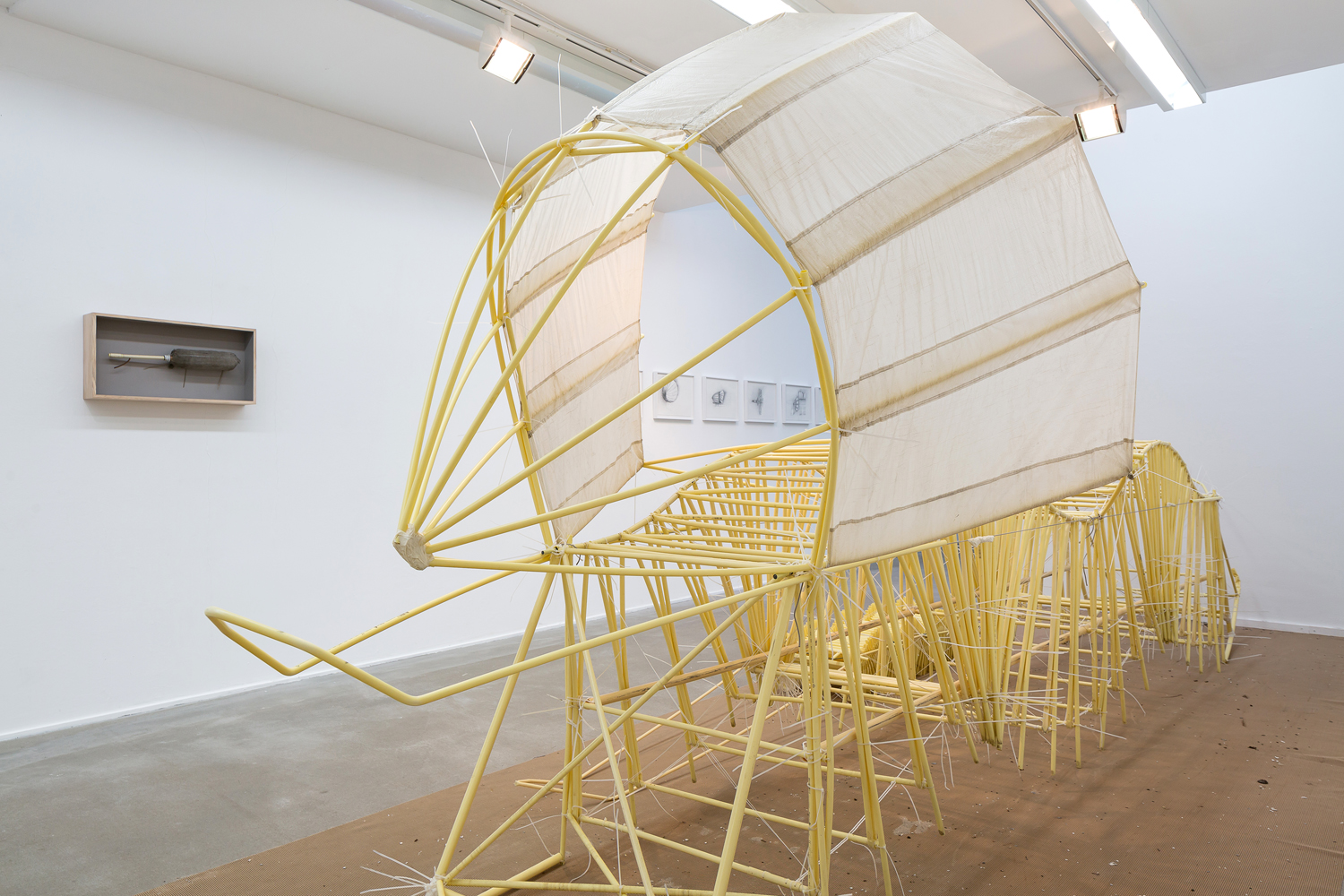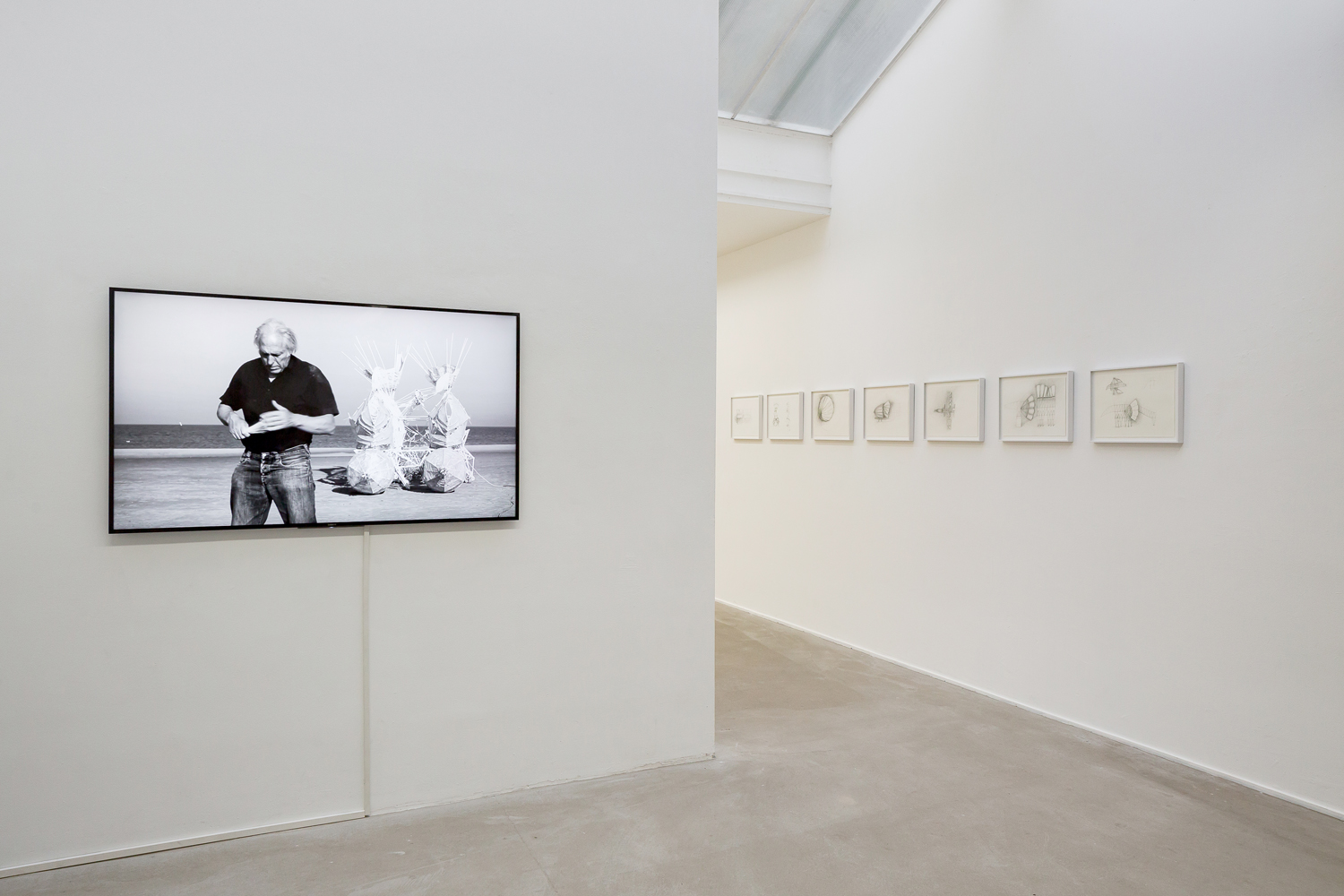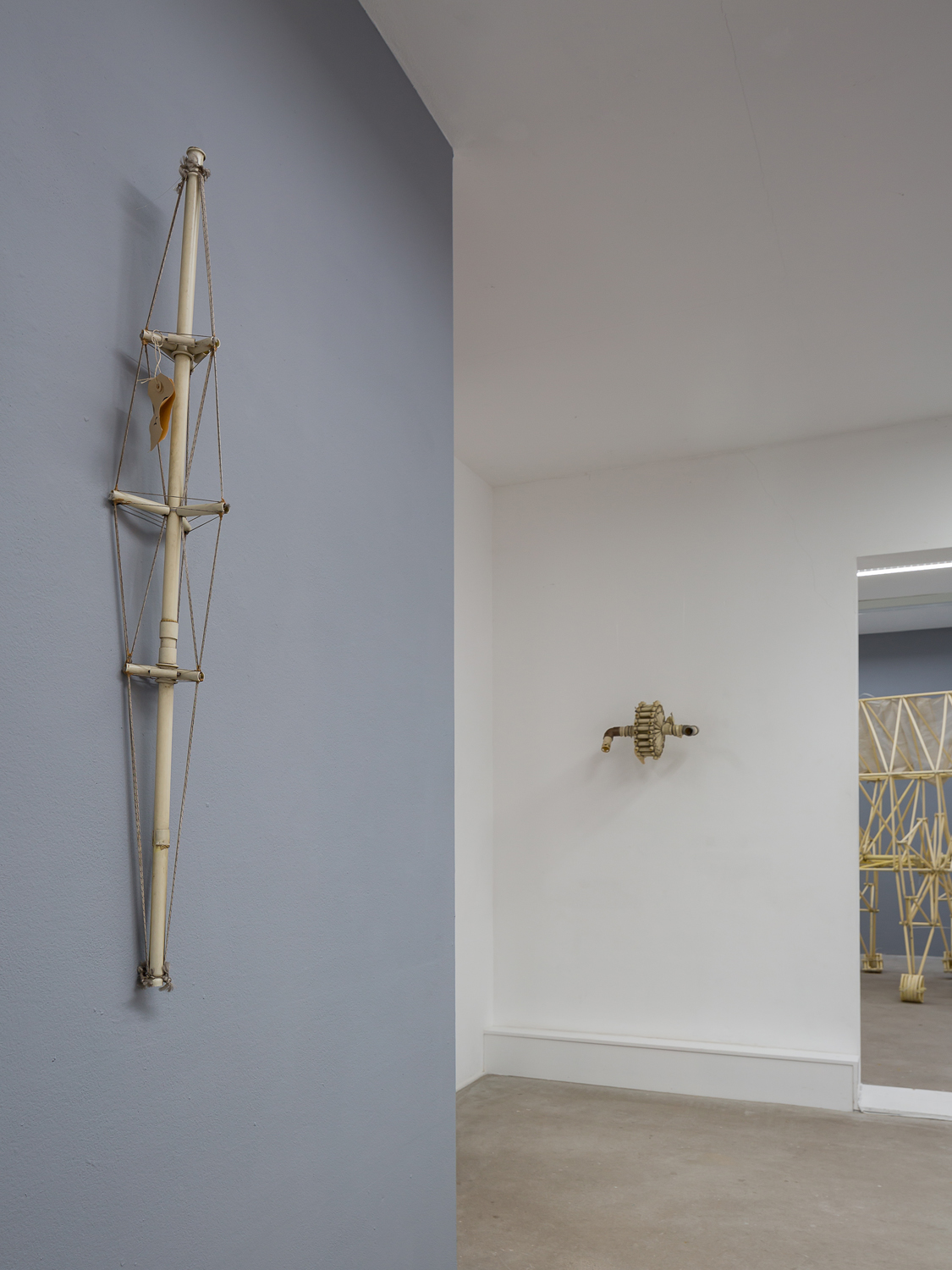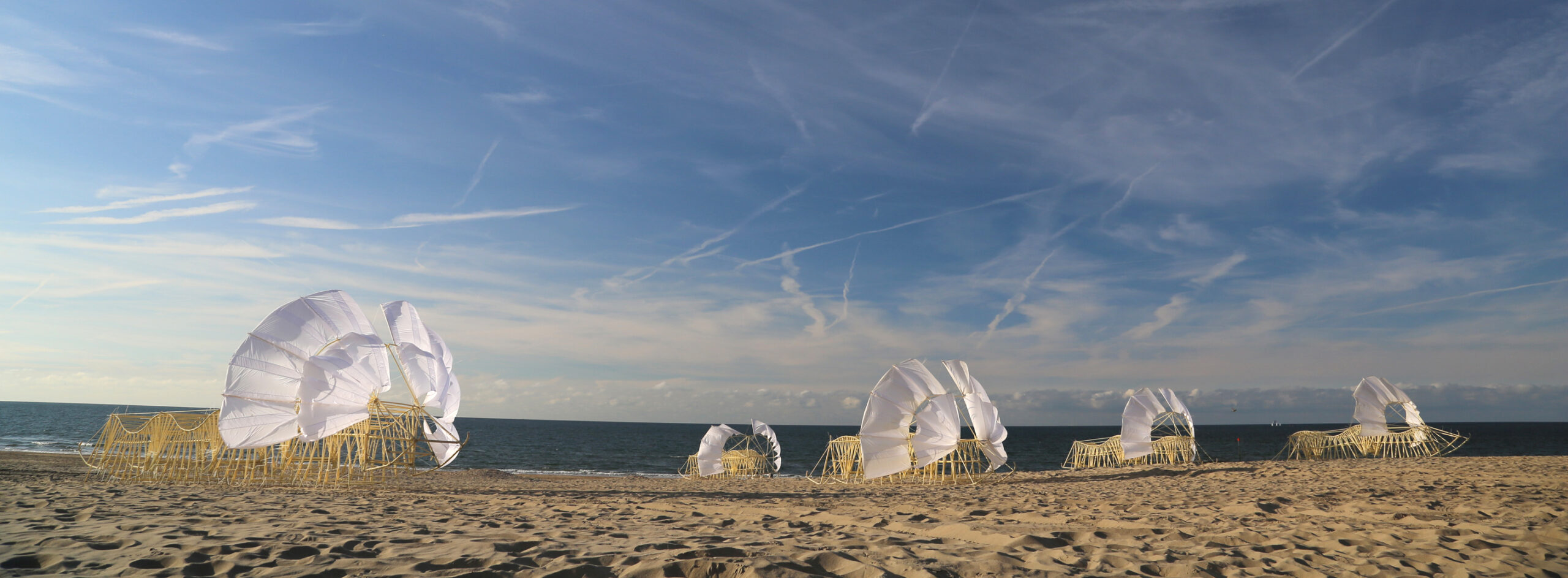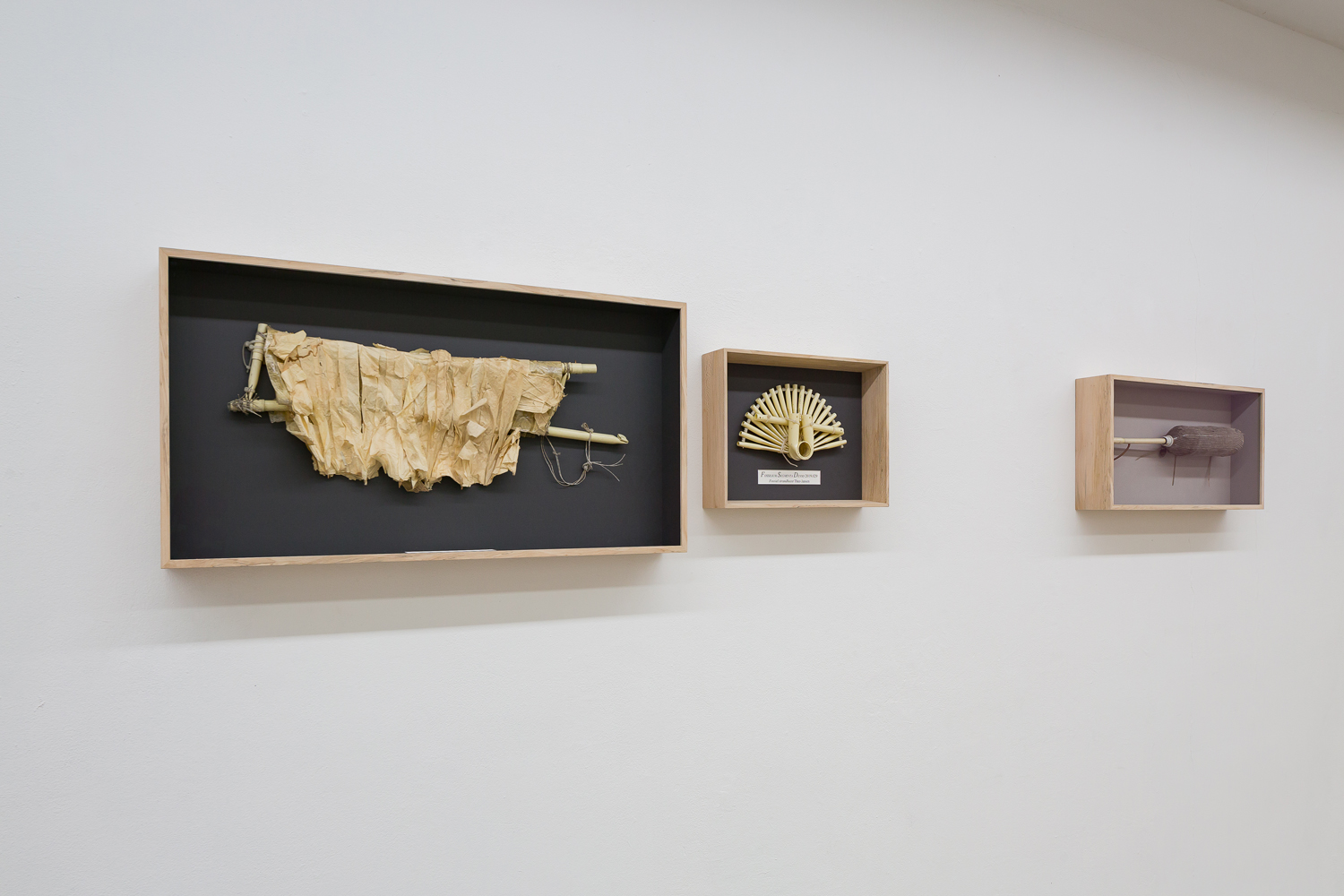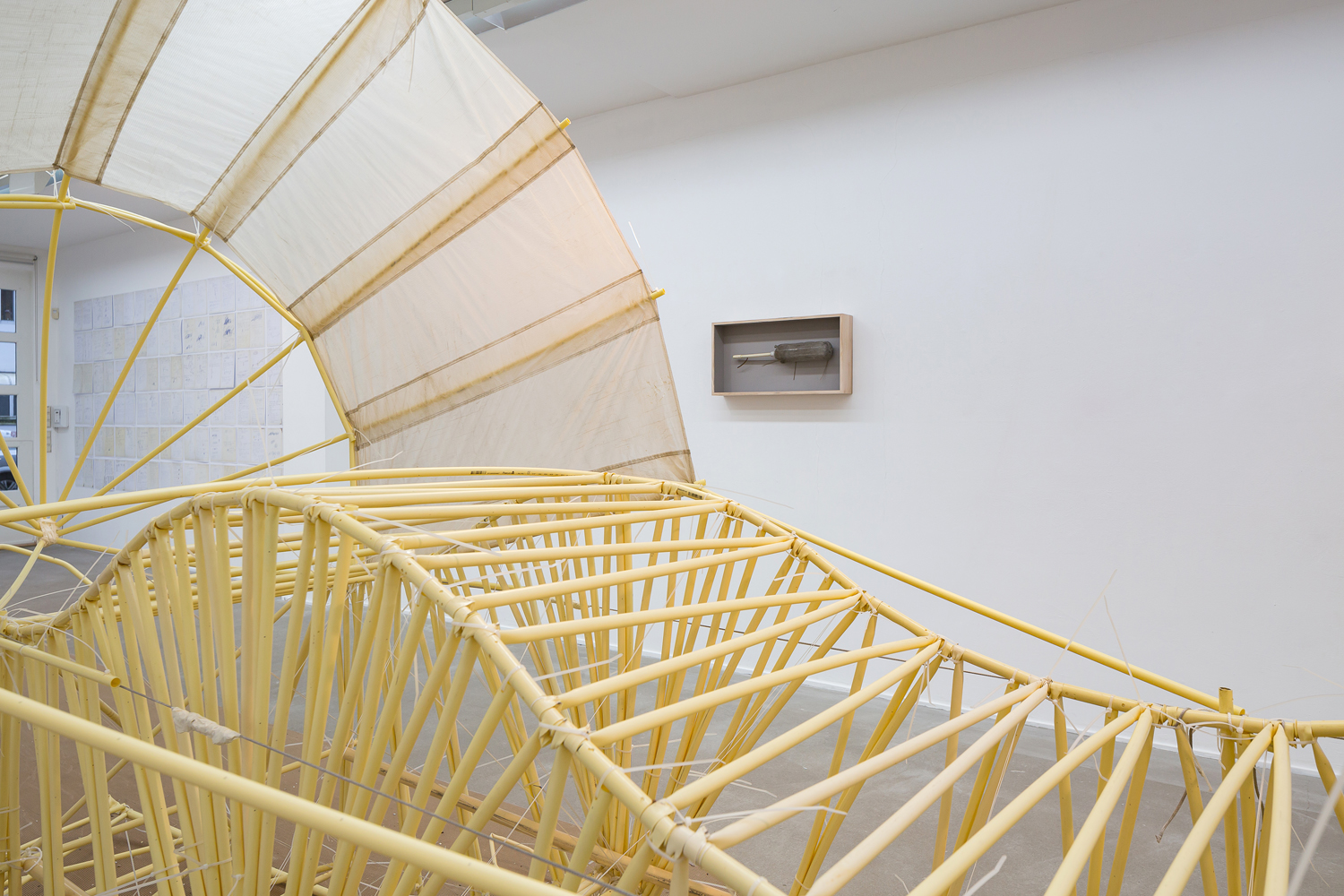Theo Jansen studied physics at the Delft University of Technology from 1968 to 1975. Driven by his interest in unconventional technical constructions and the mechanism of evolution, he develops as an artist. Throughout his oeuvre, Theo Jansen developed a deep understanding for the principles of life and the evolution of species. Slowly his beach animals came to life, initially intended to solve the danger of rising sea levels by moving grains of sand from the bottom of the beach to the top. It started with the Animaris vulgaris (1991), the common (vulgaris) animal of the sea (maris). Later generations of beach animals moved on the energy of wind, moved grains of sand, developed ingenious walking patterns and eventually could run independently on air pressure in PET bottles (‘stored wind’). To give an example: there was the Sabulosa (1994) who had four fins and was able to dig and the Umerus (2009), the suicidal animal that regularly broke its own backbone. At AKINCI the Animaris Ordis (ordinary beast) from the Cerebrum (period of the brain, 2006-2008) will be shown, alongside the Animaris Uminami and Animaris Chalibs, both from the Bruchum (era of the caterpillars, 2016-now).
The artist states that his animals get animated by the wind, which inspires movement. The movements of his beings usually cause a fascination with the viewer, due to the idiosyncratic nature of complex movement patterns, which appear organic and are reminiscent of living beings. The structures are clearly recognizable as artificial, but they still evoke the organic walking and motor skills of long-legged insects or caterpillars. Although Jansen’s constructions lack intellect and free will, and the artist remains the human author, their autonomous movement processes makes one forget this. The viewer develops the assumption – through emotions and cognitive knowledge – that motor skills are the hallmark of a living being.
Theo strives for self-reliance of his beach animals; according to him, they should be able to live independently in flocks on the beach. So far, most of his animals are extinct after a season or two. Some can be resuscitated. While they have no metabolism, nor do they reproduce autonomously, Jansen sees the ability to move and respond to environmental conditions as the basic characteristics of artificial life and intelligence which he continues to develop.
Click here for a trailer of A Boy’s Dream by Walther Grotenhuis, Cinta Forger, IDFA Competition for Dutch Documentary.

